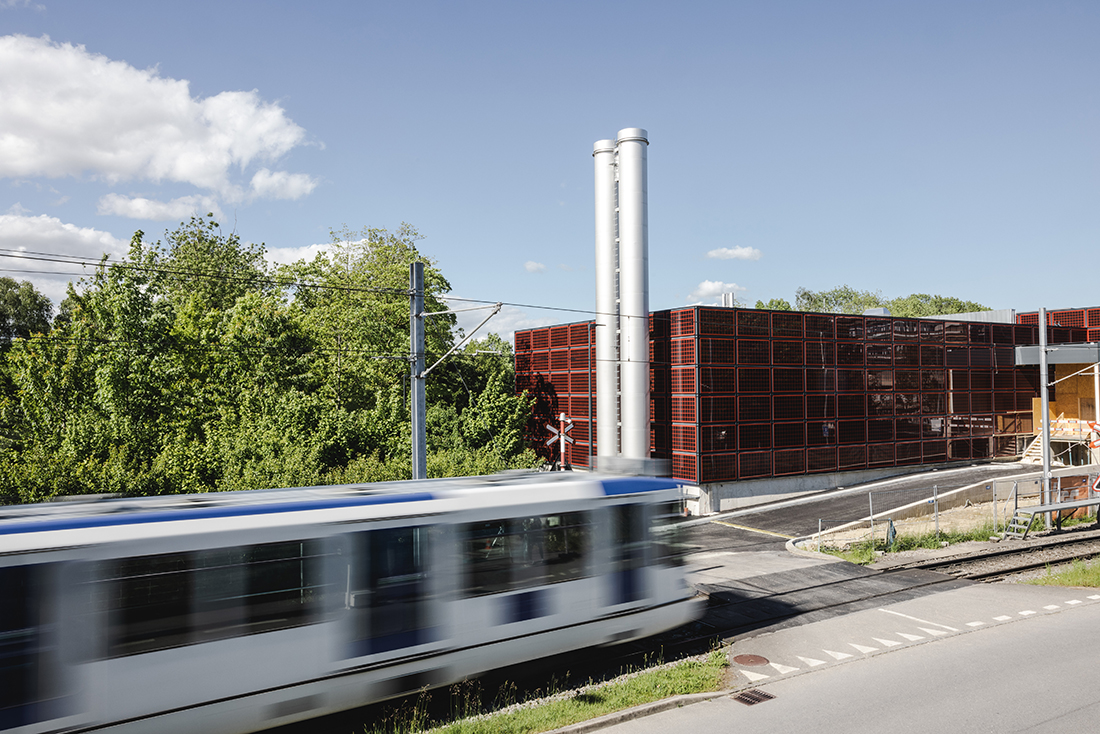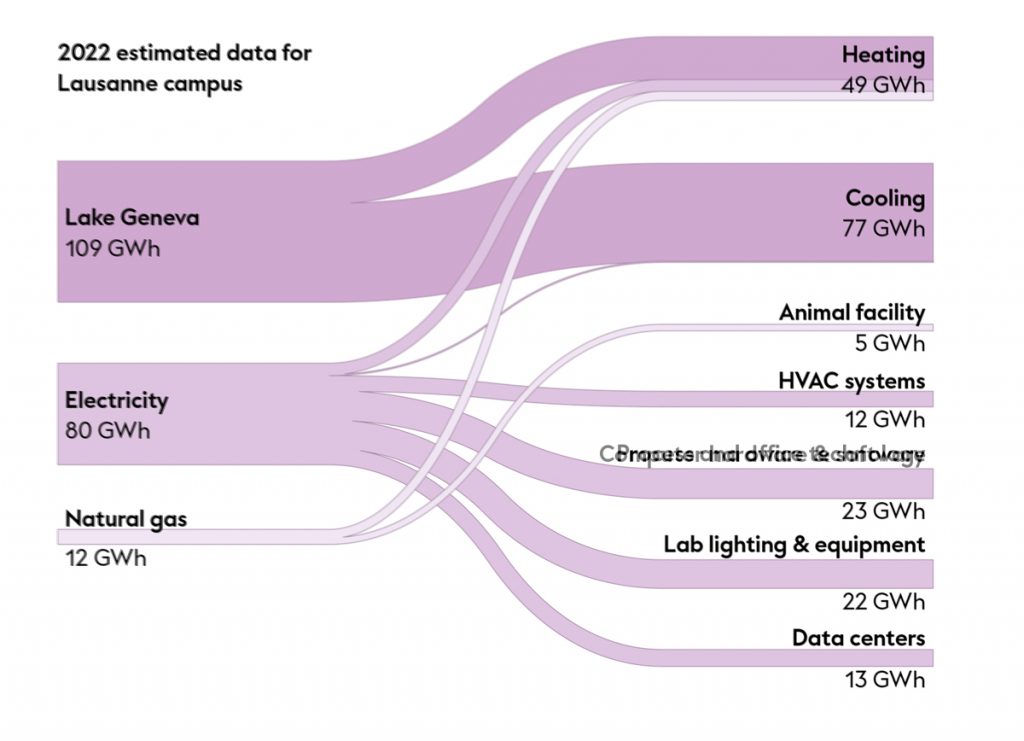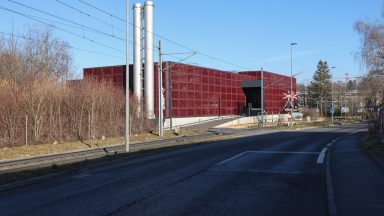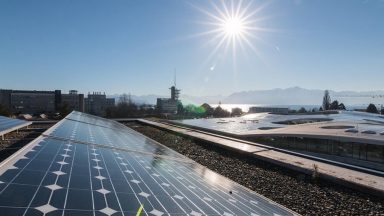Energy and Buildings

EPFL heating plant © EPFL Niels Ackermann / Lundi13
In 2022, energy use accounted for around a third of our carbon emissions. In order to reduce this impact, we are implementing energy-saving measures in all areas of our operations and are expediting projects to renovate and enhance our existing buildings and technical installations. We are also committed to expanding our on-site production of renewable energy.
Energy
Promote energy efficiency
Regardless of the type of energy used, it’s essential that we change our habits in order to significantly reduce our energy-related greenhouse gas emissions. Even sustainable resources, like our heating plant that draws thermal energy from Lake Geneva, require power to be deployed. The power we use is often imported, and we can’t guarantee that it’s fully renewable.
EPFL is implementing measures to reduce electricity consumption without affecting academic activities. See the dedicated page: https://campus-energy.epfl.ch
Renewable energy on our main campus
Today, more than 50% of our energy supply comes from renewable sources. Over 40 years ago, we made a visionary decision to install a plant on our Lausanne campus that draws thermal energy from Lake Geneva. This energy was initially used for cooling purposes and then, through the addition of heat pumps, for buildings’ heating systems. The plant was subsequently renovated so that, in 2022, the campus was entirely oil-free.
We draw the equivalent of 109 GWh of power from the lake (2022 estimate, see figure below). Around 45% of this is used for heating purposes and 55% for cooling water, in particular for our research activities. For all our other campus operations (technical installations, lighting, data centers, research equipment, and distributing the heat and cooling water generated by the thermal power plant), we purchase approximately 80 GWh of power (2022 estimate, see figure below).
In 2019, our campus still emitted more than 16,000 tons CO2-eq, making up about a third of our carbon footprint. This reflects the fact that we import some fossil-fuel-based power in winter.

EPFL is also home to an urban solar park: around 16,000 m2 of solar panels cover the roofs and facades of buildings on our Lausanne campus.
Buildings
Energy efficiency
Our buildings are continually updated in line with our research needs and the growing number of people on our campuses (students and staff). To ensure we have adequate space for teaching, research and innovation, we need to maintain and expand our building infrastructure. However, constructing and renovating buildings generates a lot of carbon emissions, particularly in terms of embodied energy. Reducing this environmental impact is at the heart of our strategy for making our campus buildings more structurally and energy efficient.
We have embarked on an initiative to renovate EPFL’s very first buildings, constructed in the 1970s and 1980s, in order to help preserve them, make them more energy efficient, and guarantee the well-being of their occupants. To that end, we will develop a masterplan detailing our plans for renovating and consolidating our campuses; this masterplan will incorporate ambitious sustainability criteria at every stage. Among other things, this will enable us to account for and reduce the buildings’ grey energy. A master plan for the technical maintenance of installations (heating and cooling systems, ventilation, control systems, lighting, etc.) is also being drafted.
New constructions
We are in the process of applying the DGNB certification system (in a version adapted to Switzerland) to all our new buildings and major renovation projects. This system is designed to account for and reduce the environmental impact of a building’s entire life cycle, from planning to demolition. This includes several factors such as the embodied energy of the construction materials. Compared with regular buildings, those bearing the DGNB certification have a smaller environmental impact and are designed to better support the health of their occupants.
For each type of building on our campuses, we aim to achieve the highest certification possible. Our goal is to reduce our buildings’ environmental impact, not only in terms of greenhouse gas emissions, but also in terms of using fewer resources such as electricity, water and raw materials.
Contact
Aurore Nembrini
[email protected]



